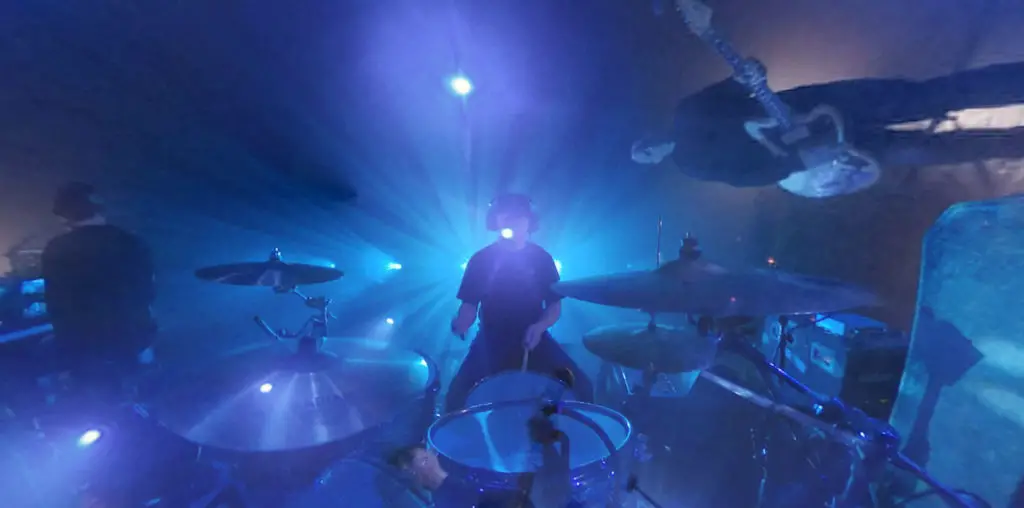
Well, congratulations. It looks like you have a hit on your hands already. ^ Great! I hope it does well for Sony. They’ve been good to me.
Is it true that you’re already working on number two? ^ Well, Sony has asked me to direct number two and I’ve signed on to do it, but I’m not technically working on it yet. Avi Arad, the head of Marvel, and one of the producers has put a page of ideas in front of me, but I honestly haven’t read it through.
It seems at the end of Spider-Man you’ve already set up the sequel. Even Kirsten Dunst’s character at one point looks as though she’s figured it out… ^ Right — that’s true. We put that moment in there with Kirsten so the audience could wonder, ‘does she know it’s Spider-Man now from that kiss?’ I really did want to set it up for a sequel, I just didn’t know if I would be doing the story. And the reason I wanted to set it up for a sequel is because when you read a Spider-Man comic book, part of the great fun is that you want it to be complete — there’s no question about that — but you want to read more about the story. So I tried to provide both a sense of closure and at the same time provide a desire for viewers to see what’s going to happen to these characters next.
Spider-Man is one of those stories that deal a lot with transition — the transition of Peter Parker to Spider-Man and of Norman Osborn to the Green Goblin, for example. Do you tend to like a story more if it deals with transition? I know “Darkman” dealt a lot with that theme as well. ^ People go through transitions. “Darkman” is kind of based on comic books that I’ve always read, although it’s an original story in the model of these Marvel comic books. It’s only cause I couldn’t get the rights to a comic book that I had to write my own comic book. So “Darkman” is patterned after the comic books and “Darkman” is one of those original comic books. But I don’t know if I am interested in the story of transformation so much as I just love stories of particular characters that happen to go through these transformations.
When you first got the script to Spider-Man, what went through your mind when you realized you would have to create believable, live-action sequences of Spider-Man swinging through the city? ^ Yes, that was a tremendous question. How were we going to get the images of Spider-Man soaring through the air? I had no idea. I was terrified. I was like Spider-Man in that I was filled with self-doubt but without any of the good looks or the superhero thing going. I had no idea how we were going to pull that off, and I ran a lot of bad ideas through my idea board. Fortunately I had John Dykstra, who’s this genius of visual effects. John Dykstra is the visual effects designer on this picture and he also did the original “Star Wars.” He was one of the first fellas to come up with the idea of a computerized camera system. He can think inside and outside of the box. He’s really a brilliant fellow and an interesting human being. But anyway, John said, ‘Sam, I think that we can do this with full CGI. The whole Spider-Man character’ and I thought maybe in the wide, little pieces but not during everything. He just said, ‘yes, we can. Let’s start our tests to prove to ourselves that we can do it.’ I was thinking that I’m aware of CGI. I’ve seen it in a lot of pictures and I’ve never been convinced. The biggest hurdle, I told him, was that although I see very convincing dinosaurs in CGI we don’t really know if a dinosaur really lopes like a Giselle or trots like a horse — I have no idea. So when you watch it you are like, ‘I guess that’s a dinosaur.’ You are eating your popcorn and you take it like that’s a dinosaur. But people we study. We look at people every minute of our lives and when we aren’t looking at them we’re probably looking at ourselves in the mirror. So we know how people move. We know every piece of body language — we really know humanity. We know it inside and out — it’s what we are all experts at. So how would we ever take an animated character and using this crude CGI — which at that point, in my opinion, was somewhat cruder than it is today — and convince the audience that they were really looking at a real human being. So that was the terrible challenge that was put before John Dykstra, Sony Pictures Image Works and a team of really great animation directors, animators and shaders that all worked there. So I hope that John and the team, with my subtle assistance, has helped pull it off, but I’m not one to say.
Get the rest of the interview in part three of SPIDER-SAM: RAIMI BRINGS A COMIC BOOK LEGEND TO LIFE>>>
